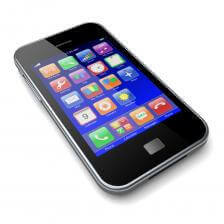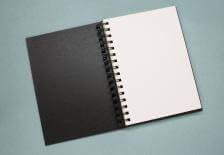Leave Your Laptop at Home: Taking Notes by Hand Is Better
Even though computers may make note-taking more efficient, you’ll get far more value from notes you write by hand. Here’s why.
Note-taking!
I just love note-taking! I get to use a Pentel G-Tec-C .28mm pen, or a Pilot G–2 07 pen with blue-black ink and carefully take notes in a Moleskine large, notebook. It’s heaven!
Kids today—and by kids I mean anyone who owns an electronic device—like to take notes on laptops, smartphones, or tablets. The worst ones—and I’m sure you don’t fall into this category—don’t take notes at all. They just sit there…vaguely motionless…as if they’re memorizing. Then they forget 95% of what happened and need to be walked through again it later. However, what those wacky kids don’t know, will hurt them.
The truth is that taking notes electronically is dramatically worse than taking notes by hand!
Sponsor: Squarespace, the all-in-one platform that makes it fast and easy to create your own professional website, e-commerce site, or online portfolio. For a free trial and 10% off, go to squarespace getitdone and use offer code GetItDone.
Take Notes by Hand

Experimenters divided students into two groups. Half took notes longhand, while half took notes on laptops. The students were then tested on the material they had taken notes on. The results? Both groups remembered facts. But when it came to ideas, the students who took longhand notes had learned the material better than the students who typed their notes.
Even With Review, Laptops Fail
What’s weird is that students who were typing their notes took much more complete notes than the students who were taking notes by hand. Objectively, the computerized notes had more information. So they should have worked better, right?
The experimenters realized that they had tested immediate learning. Perhaps, they thought, the more complete laptop notes would be better for reviewing later on, after the initial learning was in the past. They did the experiment again, this time having students review their notes a week later. Astonishingly, the students with handwritten notes still did significantly better when studying, even though their notes were less complete compared to the laptop students.
Writing Can Use Symbols and Drawings

Speaking of brain activation, the act of writing something longhand stimulates much more of the brain than typing. Typing involves moving a few fingers, only a little. Longhand writing actually requires much more muscular control, making the letter shapes properly, noting where the information is on the page, and so on. All those subtle factors get encoded in memory and help recall later on.
Draw little unicorns to stimulate your brain.
With physical books, the image of the pages, the size of the book, the book cover, and the position of information on the page all seem to be part of how the book gets remembered. Current research suggests that learning and retention is much less with ebooks because all those unconscious cues aren’t available to be encoded into memory.
I’ve also heard speculation that because handwriting is slow, it forces the note-taker to prioritize the information on the fly and record only the most important points. If this is true, it means that the note-taker is constantly evaluating and re-evaluating the importance of what they’re hearing. That kind of reflection is known to greatly enhance learning.
Paper Doesn’t Generate Interruptions
Another advantage of paper over laptops is that there are no distractions with paper. Laptops always have games beckoning. Or web browsers. Or social media. Or other notes you want to review from other classes. And laptops want you to notice them. They ding, beep, notify, pop-up, and remind you…all of which interrupt your train of thought.
With paper, you have a page. And your hand. And words. And that’s it. No “You have mail!” notifications. No cat pictures. Not even a poorly-lit, puke green picture of the omelette your best friend cooked last night and couldn’t wait to share on Facebook. Nope. Paper has none of that. Paper has a clean, pristine surface, plus your awesome notes. Everything relates to focus and learning.
Use Your Smartphone to Back Up Your Notes

You might, and that would be awful! I mean, where would civilization be if people had spent centuries expending the Herculean effort to put their notebooks in their book bags on a regular basis? (That’s sarcasm.)
If you can figure out how to carry a laptop and a $400 smart phone around, you can figure out how to keep track of a notebook you use to take notes. And by the way, if someone steals the laptop or smartphone, you probably won’t get it back. Write your name, email address, and “REWARD $100 IF FOUND” inside your notebook and if you lose it, someone will probably return it.
Knowing all that is comforting. Unless you’re me. I stay up at night, worrying that I might lose my beautiful Moleskine notebook, filled with pages and pages of important notes. So I use my $400 smartphone to create a backup of my paper notes. Every few days, I pull out my notebook and use my smartphone to take a quick snapshot of the new pages of notes I’ve added. Those get automagically uploaded to the Cloud, providing a safe backup for my notes. Plus this makes it easy for the NSA to see what I’ve been learning without having to kidnap me late at night and hold me in a secret court. Bonus!
Experiment with Lined or Unlined Pages

Whether I’m using a lined or unlined notebook, I always save the first few pages for a table of contents, as described in the episode How to Manage Your Task Lists on Paper.
Whether you’re taking notes during a meeting or during a lecture, don’t bother going to the trouble unless you’ll actually get benefit from those notes. Put away the laptop, and take your notes longhand. Use a pen and paper that feel good in your hand, and enhance your notes with drawings, arrows, little stars, or whatever works for you. Try both lined and unlined paper to find out which works best with your brain. Once you’ve taken longhand notes, use your smartphone to capture them and back them up in the cloud, so you can get them back if you ever lose your paper notebook.
This is Stever Robbins. I help high achievers change careers and grow their businesses. If you want to know more, visit SteverRobbins.com.
Work Less, Do More, and have a Great Life!






